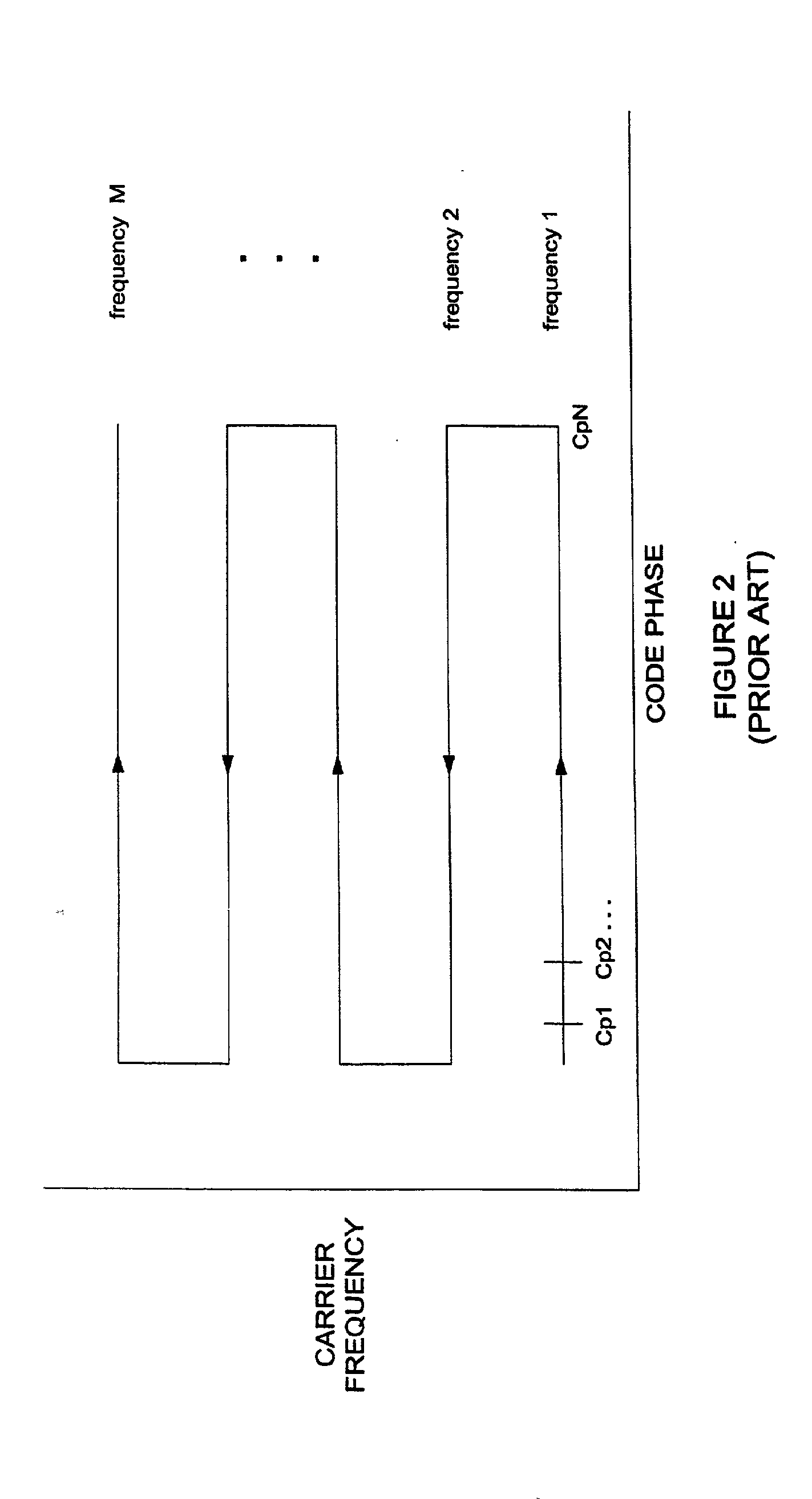System and Method for Fast Code Phase and Carrier Frequency Acquisition in GPS Receiver
a technology of carrier frequency acquisition and code phase, which is applied in the field of gps positioning systems, can solve the problems of receivers that cannot acquire signals, low output of integrators b>116/b>, and low probability of nominal carrier frequency, so as to improve the acquisition phase of gps receivers and reduce the time required for receivers. , the effect of improving the acquisition phas
- Summary
- Abstract
- Description
- Claims
- Application Information
AI Technical Summary
Benefits of technology
Problems solved by technology
Method used
Image
Examples
first embodiment
[0042]FIG. 5A is a schematic diagram of frequency domain processing according to the present invention. For clarity, the processing is described for a 1-ms portion of the input GPS signal. Gold code sequence generator 402 generates a 1-ms (i.e., complete cycle) portion of the Gold code. The Gold code is input into an FFT algorithm 506a. The digitized 1-ms portion of the received GPS signal 504 is input to an FFT algorithm 506b. The output of the FFT algorithms is the frequency domain representation of the signal. The frequency domain representations of the input GPS signal segment and the Gold code are multiplied by a frequency domain multiplier 508.
[0043]As is well-known, multiplication in the frequency domain is equivalent to convolution in the time domain, but requires far fewer operations. The frequency domain multiplication product is converted back to the time domain by an inverse FFT algorithm 510. A magnitude calculator 512 performs a point-by-point magnitude calculation on ...
second embodiment
[0045]As described above, the Gold code sequence is unique for each GPS satellite. It is a permanent and unchanging code. Consequently, the FFT of the Gold code sequence can be pre-computed and stored in a non-volatile memory, such as ROM, PROM, EPROM, EEPROM or any other non-volatile memory. In addition, the FFT can be stored in memory 312 upon initialization. FIG. 5B is a schematic diagram of a system according to the present invention that can be used when the frequency domain representation of the Gold code is pre-computed and stored prior to operation of the system. The pre-computed frequency domain representation of the Gold code 520 is input to frequency domain multiplier 508 and processing continues as described above.
[0046]Another improvement offered by the present invention arises from recognizing that the contribution of each GPS satellite in view of the GPS receiver is present in the composite input GPS signal. Consequently, the same signal portion can be used for all GP...
third embodiment
[0058]FIG. 6 is a schematic diagram of an embodiment of a system 601 for processing a multiple millisecond portion of the input GPS signal according to the present invention. In FIG. 6, a 4 ms portion of the input signal 602 is collected for processing. As described above, the signal so collected can be any length, but is preferably an integer multiple of 1 millisecond. Input signal 602 is divided into 4 segments 604a, 604b, 604c and 604d.
[0059]An FFT processor 606 performs an FFT on each of the 4 segments. As described above, only the first 1,024 points are kept for further processing. The 1,024-point segments are segments 608a, 608b, 608c and 608d corresponding to input signal segments 604a, 604b, 604c and 604d, respectively. As would be known to those skilled in the art, this is a circular convolution, modulo 1 ms. Though circular convolution is sufficient in most cases, some processing gain is obtained by using a linear convolution where a transition occurs in the collected sig...
PUM
 Login to View More
Login to View More Abstract
Description
Claims
Application Information
 Login to View More
Login to View More - R&D
- Intellectual Property
- Life Sciences
- Materials
- Tech Scout
- Unparalleled Data Quality
- Higher Quality Content
- 60% Fewer Hallucinations
Browse by: Latest US Patents, China's latest patents, Technical Efficacy Thesaurus, Application Domain, Technology Topic, Popular Technical Reports.
© 2025 PatSnap. All rights reserved.Legal|Privacy policy|Modern Slavery Act Transparency Statement|Sitemap|About US| Contact US: help@patsnap.com



